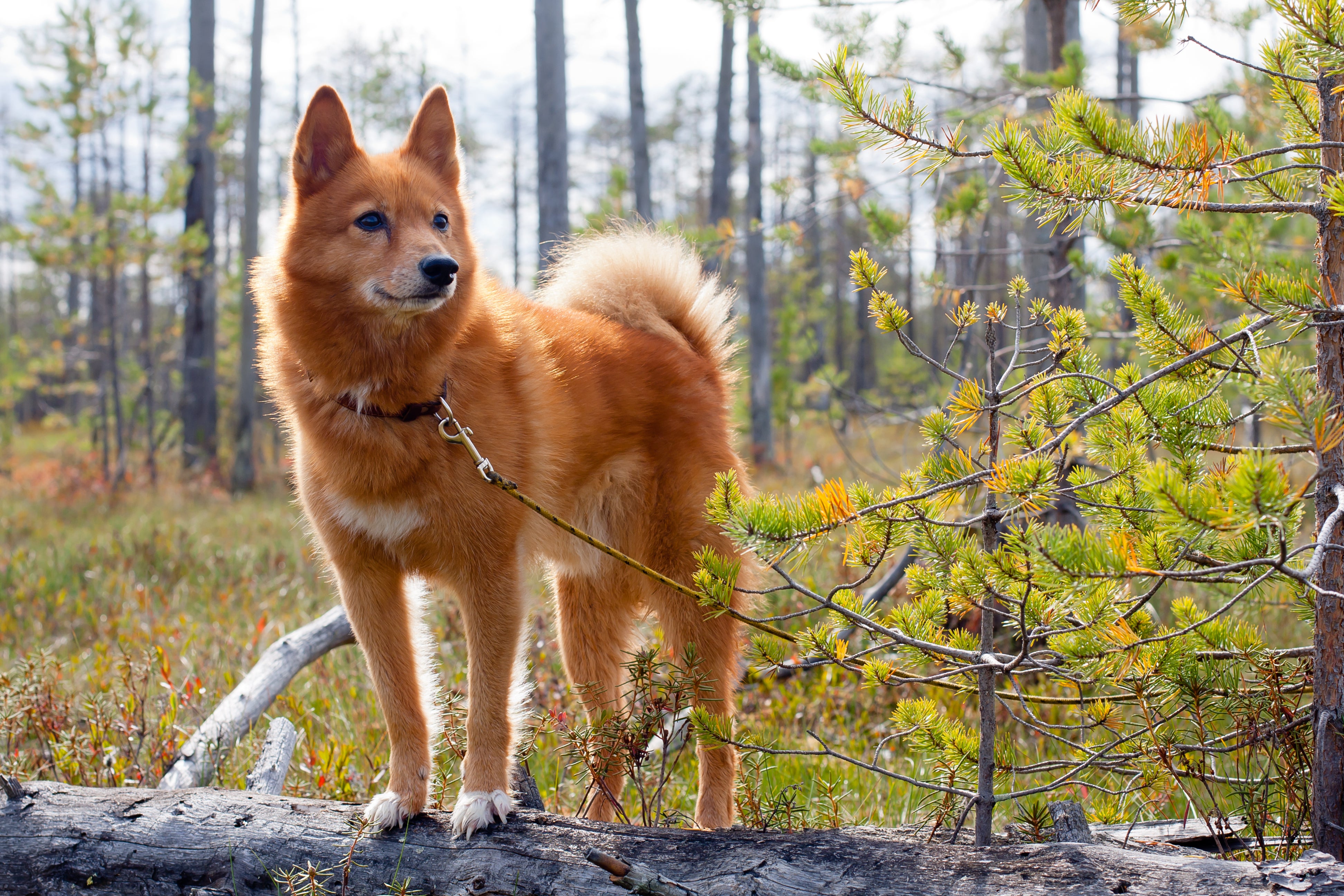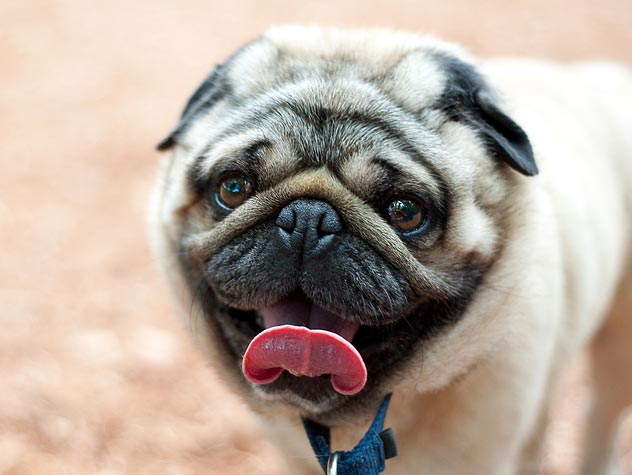Finnish Spitz
Fox-like in its appearance, the Finnish Spitz has small pricked ears, a dense double coat, and a tail that curls over. They are light on their feet and fearless. The coat is golden-red, giving off a flow. Nicknamed Finkies or Finns, they make good watchdogs, yodeling to alert.
Breed characteristics carousel
Learn More
Need to Know
- Dog suitable for owners with some experience
- Extra training required
- Generally healthy breed
- Enjoys vigorous walks
- Medium dog
- Some drool
- Requires regular grooming
- Chatty and vocal dog
- Barks and alerts to visitors/anything unusual
- Could have issues with unknown dogs but gets along with known dogs
- May need additional training to live with other pets
- May need additional supervision to live with children
- Needs a small yard, either in suburban or rural areas
- Can be left alone occasionally with training
- AKC Registered Breed

Personality
Like most Spitz types, the Finnish Spitz—also known as a Finkie—can be stubborn. They are curious and watchful and can be playful. They devote themselves to one family member and can be sensitive. Reserved and aloof with strangers, they make vigilant watchdogs who aren’t afraid to let their voices be heard—and loudly.
The Finnish Spitz dog likely descended from other Spitz types that came from Eurasia. They were originally watchdogs and later developed into hunting dogs. The breed was isolated until the early 1800s. Early names for the breed included Suomenpystykorva (Finnish Cock-Eared Dog) and Finnish Barking Bird Dog. The name was changed to Finnish Spitz in 1891, and nicknamed Finkie when it arrived in England in the 1920s. They first appeared in the U.S. in the 1960s.
Owners should be outdoorsy and fit types who don’t mind the challenge of training and living with a Spitz. Finnish Spitz are independent and clever and might take some creative motivation to train. They enjoy being home with their owners most of the time.
The Finnish Spitz dog breed needs walks that change up from time to time as they are curious and enjoy interesting routines. They love the cold and need owners who are happy heading out for a walk in any weather.
Small and compact, the Finnish Spitz dog doesn’t take up a lot of room—but they do produce a lot of hair when shedding. Due to their vocal nature, it’s best to not have extremely close neighbors who might not enjoy the dog’s yodeling. A fenced-in yard and access to a variety of walks is ideal.
A thick and short undercoat is covered with a coarser topcoat to create the Finnish Spitz’s double coat. There is long feathering on the tail and back of the legs, and the coat is shorter on the front of the legs and the head, with a more pronounced ruff in male dogs. Frequent brushing to remove dead and loose hair is recommended.
Obstinate when they want to be, the Finnish Spitz can require a little more motivation to train. They respond well to positive reinforcement and consistent training with a firm but gentle hand. They do well with scent work, which is an excellent way to tire them out mentally. They’ll need good recall and quiet command and should be socialized from an early age, especially since they are slow to mature.
Finnish Spitz dogs can do well in family life with children, but they do best with older children who can respect the dog’s boundaries and participate in exercise and training.
The cost of a Finnish Spitz from a breeder is significantly more than the cost of adopting one from a local shelter or rescue. The adoption fee usually covers additional items such as spaying or neutering, vaccines, and microchipping.

Learn more about feeding and caring for your Finnish Spitz on Purina.
Did you know?
- There are barking competitions in Scandinavia for Finnish Spitz dogs, with record barking occurring at 160 barks per minute.
- The Finnish Spitz is the National Dog of Finland and appears in many patriotic songs.


